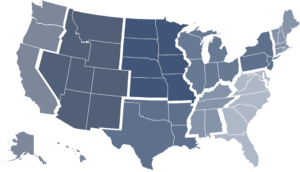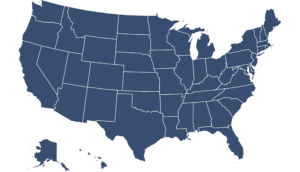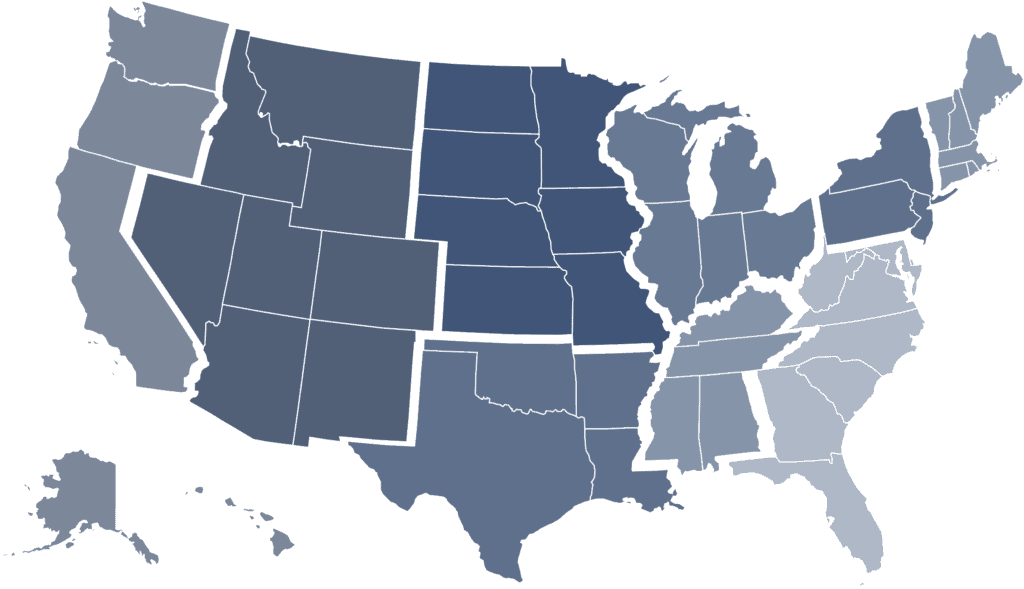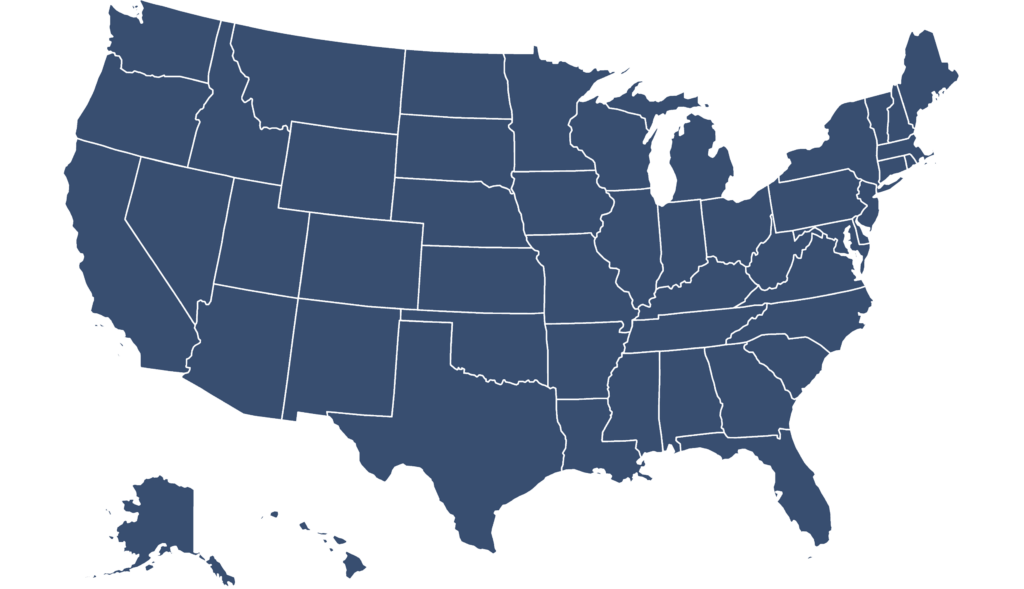Organized Real Estate
Multiple listing services, along with Realtor associations, are collectively referred to as organized real estate (ORE), the infrastructure upon which the residential real estate brokerage industry largely functions. These organizations play a major role in providing real estate marketplaces and data sources across the US that support the buying and selling of homes, apartments and other real estate. Realtor associations also support increased professionalism and engage in political advocacy at the national, state and local level on issues related to property ownership and members’ business.
The ORE section of the Real Estate Almanac presents a ranking of the following ORE organizations listed by end-of-year 2024 subscriber and member count:
- Top 10 MLSs
- Top 10 MLSs by each of the nine US Census regions
- Top 10 local Realtor associations
- Top 10 local Realtor associations by each of the nine US Census regions
- Ranking of all state Realtor associations by end-of-year 2024 member count
It also presents a full index of all US MLSs and local Realtor associations, along with key details of each.
Each ranked MLS listing includes subscriber count, details for how many local Realtor associations the MLS serves, its type and its ownership structure. Each ranked local Realtor association listing includes the name of the Regional or Local MLS of which it is a member.
Details for each organization type included in this section of the Real Estate Almanac are presented below.
Multiple Listing Services
MLSs maintain databases that serve as a comprehensive marketplace in locations across the US. They also facilitate connections between real estate buyers and sellers that support an efficient residential real estate market. At the end of 2024, there were 515 MLSs in the US.
The vast majority of local Realtor associations run MLSs, either in partnership with other local Realtor associations or brokers. These MLSs, which T3 identifies as Regional MLSs, represent the largest MLSs in the US; they have huge footprints, sophisticated technology, innovative business practices and well-run management structures. The largest MLSs serve members across a broad geographic area, sometimes across an entire state or even multiple states. These include Bright MLS (101,000 subscribers), California Regional MLS (99,000 subscribers) and Florida-based Stellar MLS (81,453 subscribers).
Since the early 1990s, the MLS industry has seen a wave of consolidation.
A decade ago, there were more than 800 MLSs. From 2020 to 2025, the number of MLSs has dropped by 8.8% while the average MLS subscriber count has grown 28.1% to 3,632. In addition, subscribers are concentrated among the largest MLSs. Over a third (34.5%) of all MLS subscribers belong to one of the US’s 10 largest MLSs.
Each MLS ranked includes details about its type: whether it is a Regional MLS, which has more than one shareholder or spans multiple markets, or a Local MLS, which has just one shareholder in a single market. The Regional MLSs ranked include the number of local Realtor associations they serve. Each ranking also includes details about ownership type: whether it is a Realtor MLS, an MLS owned exclusively by one or more local Realtor associations; a Hybrid MLS, an MLS owned by a mix of local Realtor associations and brokerages; a Broker MLS, an MLS owned exclusively by one or more brokerages; or a Private MLS, an MLS owned by one or more private entities.
Access the top 10 MLS US ranking, and the top 10 MLS ranking for each region.
Local Realtor Associations
As trade associations, Realtor associations are nonprofits owned by their members. They represent their members and aim to help them improve the quality of service they provide, their education and professional standards. The classic Realtor association mission is simple: to make members more profitable and more successful.
Realtor associations come in three varieties, determined by geographic scope: national, state and local. Realtor associations have a federated makeup: members cannot join just one. When agents join a local association, to gain access to the MLS for example, they automatically join the state and national associations; the memberships are tied together in what is known as the three-way agreement.
There were 1,014 local Realtor associations at the end of 2024, 17 less than existed at the end of 2023.
The largest local Realtor associations have tens of thousands of members and, subsequently, healthy revenues that allow them to offer quality products and services to members and to play a large and meaningful role in their communities. Examples include the Miami Association of Realtors (over 56,000 members), the Houston Association of Realtors (over 44,000 members) and Broward, Palm Beaches and St. Lucie Realtors (over 37,000 members).
On the other end of the size spectrum lie small local Realtor associations, which, because of relatively small revenues and resources, can sometimes struggle to offer a core set of services to members and struggle for relevancy. The industry has a large number of these smaller associations. Just over a third of the nation’s local Realtor associations (30% or 309 local Realtor associations) have less than 200 members.
As with MLSs, local Realtor associations are consolidating but slowly.
The number of local Realtor associations has dropped 6.5% from 2020 to 2025 while the average membership count has grown 14.9% to 1,477. The nation’s 10 largest local Realtor associations accounted for approximately 19.1% of the U.S.’s total local Realtor association membership at the end of 2024. This is a slight increase from the 18.5% share in 2023.
Each ranked local Realtor association includes the name of the Regional MLS it is a member of, where applicable.
Access the top 10 US local Realtor association ranking, and the top 10 local Realtor association ranking for each region.
State Realtor Associations
As trade associations, Realtor associations are nonprofits owned by their members. They represent their members and aim to help them improve the quality of service they provide, their education and professional standards. The classic Realtor association mission is simple: to make members more profitable and more successful.
Realtor associations come in three varieties, determined by geographic scope: national, state and local. Realtor associations have a federated makeup: members cannot join just one. When agents join a local association, to gain access to the MLS for example, they automatically join the state and national associations; the memberships are tied together in what is known as the three-way agreement.
State Realtor associations serve as the legislative and regulatory voices for real estate at the state level where many licensure laws and tax structures are established. Many provide essential services like education or benefits such as forms for members and local associations.
State Associations are also responsible for the annual core standards certification passed down from the National Association of Realtors. This certification sets minimum service and organizational requirements that local associations must maintain to be chartered by NAR.
View the state Realtor association rankings.
Methodology
To gather the data to enable these rankings, T3 Sixty gathers data from multiple sources and surveys multiple listing services and Realtor associations. Thousands of data points are then processed, standardized and validated to create the residential real estate industry’s most accurate ranking of MLSs and Realtor associations by subscriber and member counts. Where necessary, T3 applied a detailed methodology to develop an estimate for subscriber or membership count; these instances are noted with * in the rankings. Full rankings and data are available to those who have purchased access to T3 Trends. Reach out to team@t3data.com for more details.




